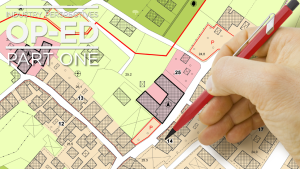Ontario’s Workplace Safety and Insurance Board (WSIB) has announced the average premium rate for construction employers will drop 2.1 per cent in 2023, continuing a trend that has seen average premiums in the sector reduced by over 60 per cent between 2016 and 2022.
The reduction gives constructors a leg up on most other Ontario businesses. The WSIB says the average premium rate across all employers will remain static for 2023 at $1.30 for every $100 of insurable payroll.
WSIB president and CEO Jeffery Lang announced the new rates on a phone call this week, a departure from past years when rates and other information were unveiled at an annual general meeting. There will not be an AGM this year. The rate information went live Oct. 19.
Lang said 95 per cent of construction firms will enjoy reduced premiums next year. Overall there will be approximately $16 million in total savings for the construction industry.
“The construction sector is being acknowledged for the great work they’ve been doing in reducing injuries,” said Lang.
There are six classes of construction employers. Rate reductions for 2023 are as follows:
- G1 Residential Building Construction, 2023 class rate $2.47, 2022 rate $2.63
- G2 Infrastructure Construction, 2023 rate $1.81, 2022 rate $2.12
- G3 Foundation, Structure and Building Exterior Construction, 2023 rate $3.60, 2022 rate $4.12
- G4 Building Equipment Construction, 2023 rate $1.50, 2022 rate $1.7
- G5 Specialty Trades Construction, 2023 rate $2.16, 2022 rate $2.36
- G6 Non-residential Building Construction, 2023 rate $1.55, 2022 rate $1.79.
Due to a hike in the maximum insurable earnings (MIE) ceiling from $100,000 to $110,000, some firms with high-wage employees could see an increase in total premium payments that could negate the premium rate drop.
For example, high-wage employers in the G6 class will see rates drop from $1.79 to $1.55 for every $100 of insurable payroll but with the MIE increase they could now be paying out more for their high-wage workers based on the new higher ceiling.
“The reality is that the construction sector has a lot of highly paid skilled trades,” said Lang, noting the MIE is determined by the government.
“Over the two previous years, they held the limit because of the pandemic. It was a state of emergency. They didn’t want to put any undue burden on people.”
The MIE has to be able to “flow” and reflect current wage rates to make the calculations work for all employers, said Lang. “So, the maximum insurable earnings will go back to where it should be…eventually, it’s like, pay me now or pay me later.”
The WSIB felt diverse pressures as it endeavoured to determine appropriate rates for 2023, Lang explained. The economy could be slipping towards a recession and interest rates are going up, he said, putting additional pressures on employers. At the same time, he said, WSIB investments have been taking a hit as part of the global economic instability, and earlier this year the WSIB paid out a surplus rebate for schedule 1 businesses.
“We’re really comfortable that we are going to be well within our sufficiency corridor, and we’ll be able to hold the rates,” said Lang.
The WSIB’s health and safety excellence program, which offers incentives to small employers to engage in health and safety programming, is paying dividends for employers with less than 100 workers, including many construction employers, Lang said. The incentives are “meaningful,” he said, with some employers receiving a rebate that amounts to 100 per cent of their WSIB premiums.
“I think it’s a great incentive for them to keep their eye on the ball. And the rates now reflect how beneficial it can be…if the construction sector continues to do what it’s doing, which is leading the way in health and safety.”
In previous years stakeholders received documents at the WSIB’s fall AGM and were able to question WSIB executives in person, and protestors from such groups as the Occupational Disease Reform Alliance were known to gather to raise grievances. Lang said the AGM was costly to hold and given the timetable for approvals of documents such as the WSIB’s annual report, some of the information presented was out of date.
The WSIB has improved its information systems in the meantime and all relevant information is readily available on its website, Lang said.
As for whether the WSIB might be trying to avoid scrutiny, he said, “We’re highly scrutinized. Just open the Toronto Star on any given day, if there’s something going on at the WSIB it will be on the front page.
“If we do a better job of getting people back to work quicker, safer and driving value for the premiums, keeping our premiums reasonable, there won’t be anything for people to complain about.”
Follow the author on Twitter @DonWall_DCN.











Why not reinstate the 5% in benefits to injured workers in this province?